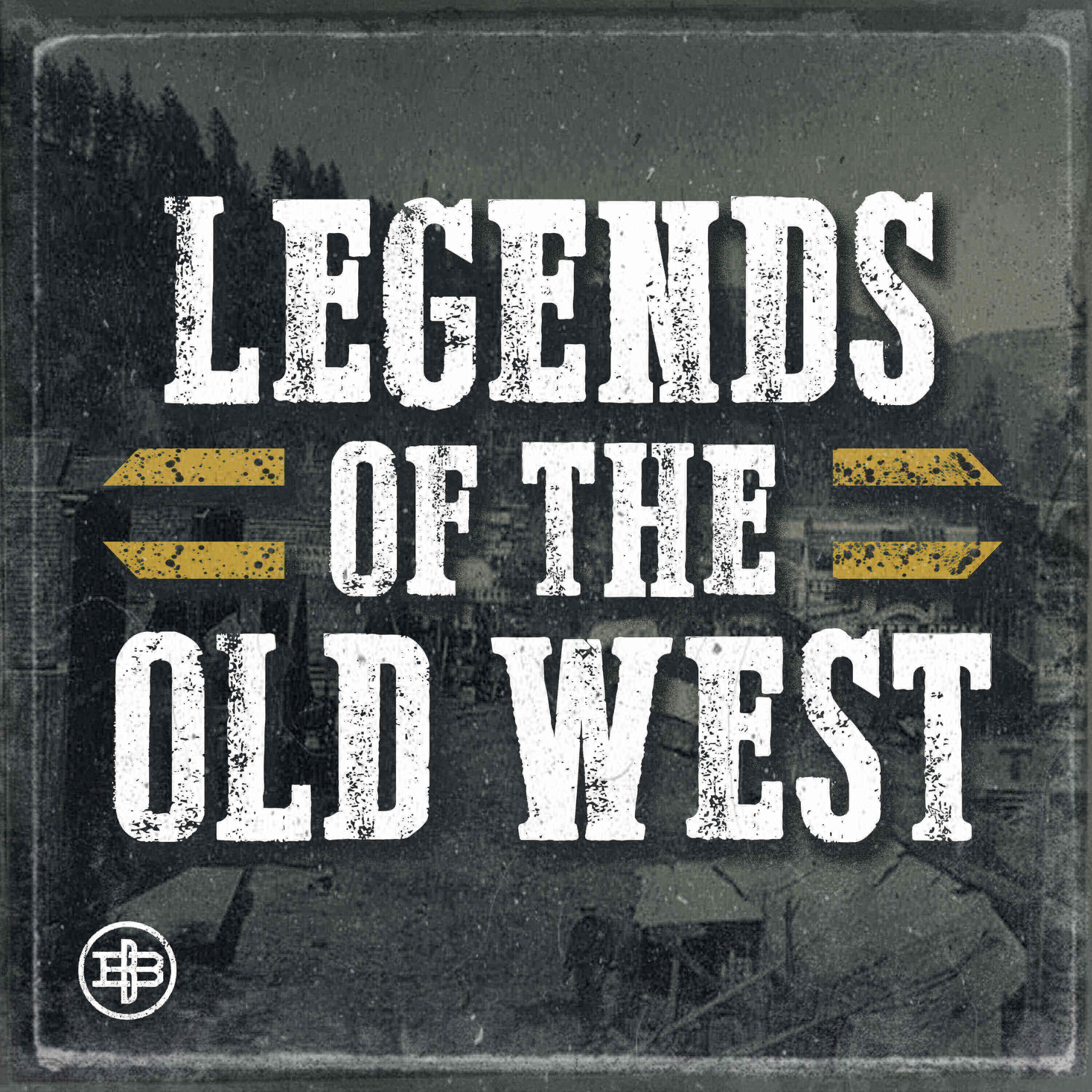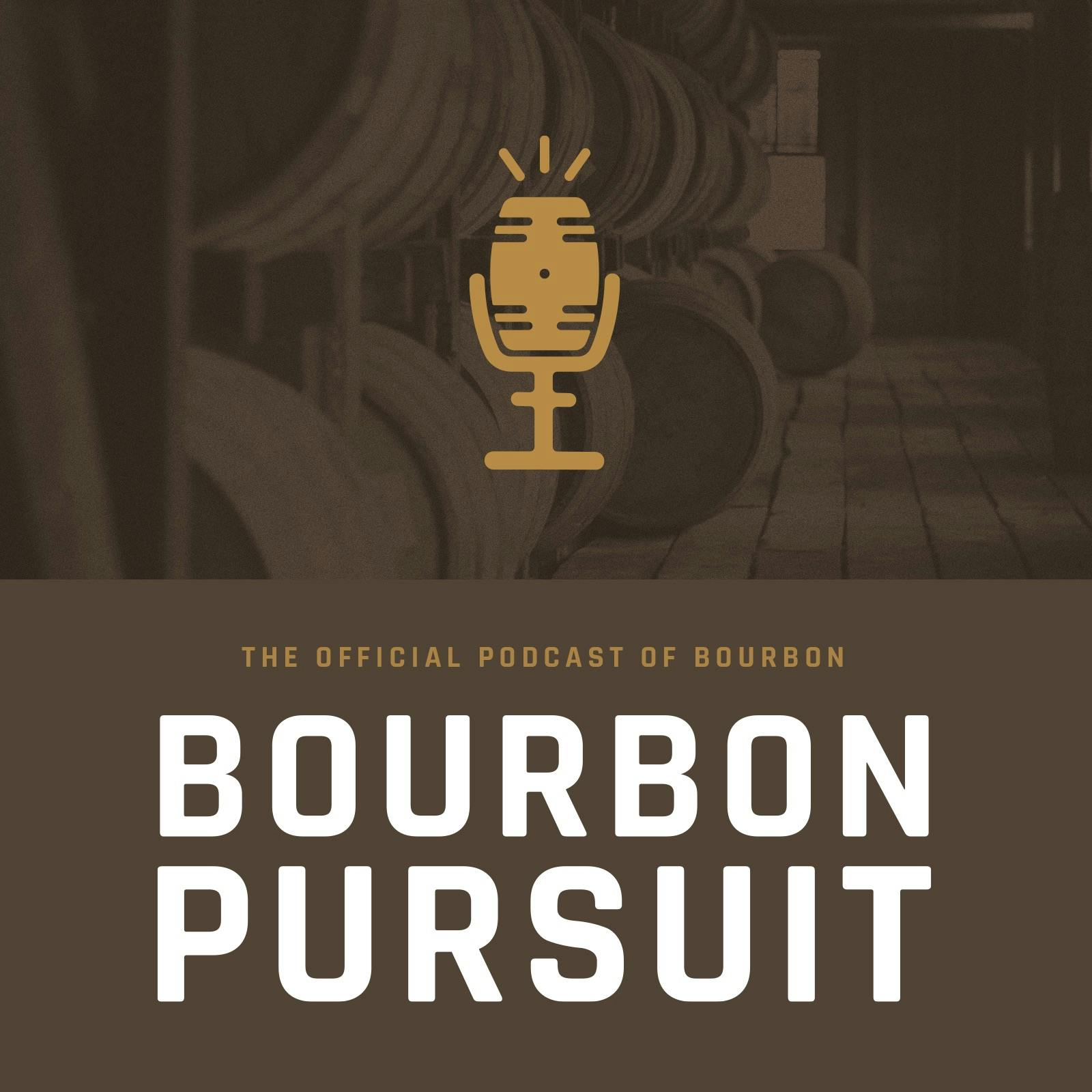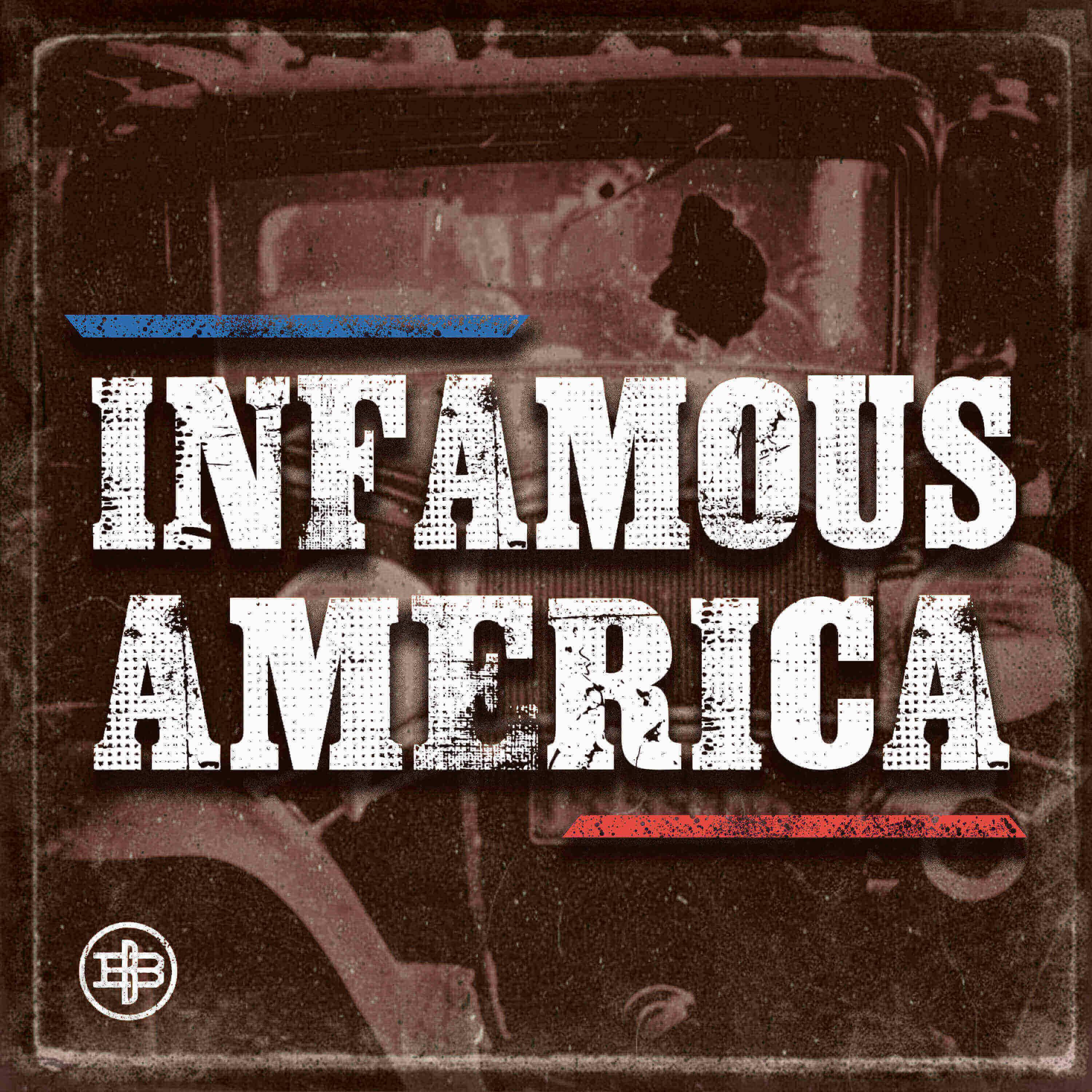
Bourbon: Legends from the Trail
Welcome to “Bourbon: Legends from the Trail,” the ultimate podcast where bourbon’s rich history and captivating stories are poured into every episode. Hosted by Travis Hounshell, a seasoned bourbon trail guide, this show explores the fascinating world of America’s native spirit, uncovering the legends, myths, and truths that have shaped bourbon’s legacy.
Each episode takes listeners on a journey through the heart of bourbon country, visiting iconic distilleries like Buffalo Trace, Maker’s Mark, Jim Beam, Four Roses, and Wild Turkey and many more! Travis dives deep into the lives of industry pioneers, from the infamous to the revered, shedding light on the personalities and events that crafted some of the world’s most beloved spirits. Discover how legends like Elijah Craig and Pappy Van Winkle helped shape bourbon’s legendary status, and uncover the secrets behind famous brands, like the story behind Maker’s Mark’s signature red wax or The Great White Whale of bourbon (a bourbon that most do not even know exists, but is a collector's apex)
Whether you’re a seasoned bourbon aficionado or someone who simply loves a good story, “Bourbon: Legends from the Trail” offers a flavorful blend of education, entertainment, and surprises. You’ll hear about the passion, innovation, and resilience behind each bottle, while learning the untold stories and serendipitous moments that turned bourbon into an enduring American icon.
Pour a glass of your favorite bourbon, uncork the history, and join us for a journey through time and taste. Hit subscribe or follow button and immerse yourself in the legends behind the spirit that continues to captivate whiskey lovers worldwide. Cheers to the stories, the craftsmanship, and the legends that live in every drop of bourbon!
Bourbon: Legends from the Trail
Special Episode: Buffalo Trace and the Flood of 2025
She didn’t come all at once. That would’ve been too easy. No, this time, Mother Nature rose with a quiet vengeance—slow, steady, and unstoppable. First came the wind—tornadoes clawing across Kentucky’s heartland. Then came the rain, wave after wave, day after day, until the rivers could hold no more. The waters rose of Kentucky’s rivers rose—not with a roar, but with a creeping certainty. Towns flooded. Homes vanished. And in Frankfort, the unthinkable happened: the legendary Buffalo Trace Distillery… disappeared beneath the river’s muddy reach.
This week, history is no longer something we talk about—it’s something we’re living. In this urgent and raw episode, we put aside our planned release”Nature’s Reckoning: When Hell Came to Bardstown”.... to bring you the unfolding story of the 2025 flood—how it compares to the infamous disaster of 1937, how bourbon’s most sacred grounds have once again been tested, and how the spirit of survival, just like the whiskey aging in those storied warehouses, refuses to break. This isn’t just a story about bourbon. It’s a story about resilience. About the strength to rebuild. And about how, even when the waters rise, Kentucky stands tall.
Feel free to email your thoughts about the episode or the show in general at thebourbonprincipal.com. I would love to hear from you!
Thank you for listening to Bourbon: Legends from the Trail, where history meets flavor and every bottle has a story to tell. Cheers to the stores and legends behind the Spirit! Please leave a rating and review as it will help me plan future episodes.
She didn’t come all at once. That would’ve been too easy.
No—this time, she stirred awake with a purpose. Slowly. Deliberately. Eyes wide open and locked on Kentucky.
First, she sent the wind. Storms with claws.
Tornadoes raked across central and southern Kentucky, twisting through towns, through open fields, and cities large and small. Then behind the damage, she brought rain from the remnants of the storm. Sheets of it. Heavy, unrelenting. The ground took it all. Absorbed every drop like a bruised sponge until it could not take anymore.
And when the winds died, people began emerging from their hiding places—out of cellars, basements, closets and storm shelters. The lucky breathed a sigh of relief, while others stepped over debris, hugged neighbors, and began to assess the damage.. Fix fences. Replace windows. Dry out floorboards. Most believed the worst had passed.
But they didn’t know. For they couldn’t have known.
These storms were just her prelude.
Because the dark side of Mother Nature had awakened…..and she had a plan.
Next she brought the rain.
Not sudden or screaming like the storms that had just passed. No, this was slower—insidious. Wave after wave, day after day of heavy rain.
The earth was already soaked from the storms. The rain could not penetrate and had no choice but to run. The ground gave up, overwhelmed. And the water began to gather—quietly at first.
It rolled off rooftops. Slipped down ditches. Gurgled into creeks.
Then it found its way into the rivers.
And the rivers… all they could do was to begin to rise.
Not with drama. Not with flash. But with slow, creeping certainty.
Inch by inch. Foot by foot.
Like a shadow stretching across the land, only water instead of darkness.
Rivers across Kentucky have begun to swell—one after another—pushed beyond their banks by the unrelenting rain. The Kentucky River, the Salt River, the Little Kentucky, the Dix… all of them moving as if drawn by one shared fate, their waters converging toward the great artery that forms Kentucky’s northern edge: the Ohio River. And the Ohio… is no longer holding the line. She’s spilling over—into towns, into farmlands, into the very heart of cities that have long trusted her banks.
Right now, as I sit behind this mic, Sheperdsville lies underwater, the Salt River overtaking her edges. Louisville and Cincinnati—each straddling the Ohio—are being swallowed by the runoff of a state’s worth of rain. Countless other communities, tucked beside what were once gentle streams and steady rivers, are now being inundated by the very waterways that gave them life.
This is the ancient bargain man struck when it settled near rivers—for food, for water, for trade. And now, once again, we’re paying the debt for that promise.
In Kentucky’s capital city, Frankfort, the Kentucky River has crept past its thresholds. It has slipped into the streets, seeped into cellars, creeped into homes, and now—quietly, almost reverently—it has swallowed the Buffalo Trace Distillery.
For you bourbon lovers, Let that sink in.
Buffalo Trace, home of Pappy Van Winkle, Blantons, Weller, Eagle Rare and many many more…. is under water.
The river, running through Frankfort and past the legendary distillery, is currently 17.26 feet above flood stage. From the sky, the photos don’t even look real. You can’t tell where the river ends and the distillery begins.
Some buildings stand knee-deep in muddy water, others the water would be over your head.
The gift shop? Completely flooded.
The famous Warehouse C? 1st level of barrels…submerged.
Warehouse H—where every barrel of Blanton’s matures at some point in its life—under six to eight feet of river water.
If you’re trying to imagine it… don’t. Because it’s worse than your mind can picture.
This week's episode of Bourbon: Legends from the Trail entitled Nature’s Reckoning: When Hell Came to Bardstown, was supposed to be released. It was the conclusion to our two-part series, on how Mother Nature has clashed with Kentucky bourbon through time. That episode will be pushed back and will be the next episode released on April 14.
But for now, history is unfolding right before us.
And while this show is always about bourbon and its stories, I want to be clear: these floods have devastated more than just Kentucky’s bourbon industry. Lives have been lost. People's homes and businesses are under water. Entire communities have been uprooted. Our hearts are with every family affected. I ask each one of you who are listening to keep those affected by the current floods in your prayers and if you can find ways to help, please do.
Still, at the end of the day, this podcast tells stories of bourbon—and bourbon like people, if nothing else, is a story of survival.
And the Buffalo Trace distillery that is currently under water? She’s no stranger to survival.
This isn’t her first flood. She’s weathered dozens. But of those, at least three have been considered major. None, perhaps, more infamous than the flood of 1937.
But when today’s flood is all said and done… 2025 may steal that title.
Bourbon however, like life, is not about what’s lost…It’s about what survives.
INTRO
Let your mind travel back in time…
Again…She didn’t come all at once. That would’ve been too easy.
No… in 1937, Mother Nature’s dark side came with patience.
She began her campaign with snow—blanketing Kentucky’s hills and hollers in a cold, deceptive silence.
Then came the thaw.
The creeks gurgled with new life. The ground turned to slush.
And just when folks thought spring might be around the corner… she opened the skies.
Not a downpour. Not a thunderstorm. Just… rain.
First it started as a fine mist, albeit heavy as a curtain of fog.
Then a drizzle as if Mother Nature was gently watering the land with a watering can.
Then….it turned heavier, a rain that seemed to never stop.
It was January, and for the first few days, folks laughed about muddy boots. Children splashed in puddles. But after a week? The laughter began to fade.
By day ten, the rivers had bloated.
By day twelve, they had become something else—great, brown, roaring arteries of destruction.
By day fifteen, they had taken the fields.
Then the roads.
Then the railways.
Everything was water.
In Frankfort, people gathered at the riverbanks in silence, staring at the slow rise like mourners at a wake.
At the George T. Stagg Distillery—what we now know as Buffalo Trace—it began quietly. Just puddles in the yard.
By January 23rd, the water was inside the gates.
By the 25th, it stood knee-deep on the bottling floor.
The stills were cold.
Fermentation tanks floated like lifeboats.
One worker remembered:
“It didn’t crash in like no ocean. It just… kept coming. You’d leave at night and come back in the morning, and it had moved another foot. You could measure its climb on the bricks.
up my creeks.”
She had waited until the snow had melted. Until the soil had given up and could not hold another drop..
And then she poured nineteen days of cold rain over the Commonwealth
The yard became a lake.
Men rowed between buildings in boats. Barrels floated like apples. Hats were nailed to window frames—markers of how high the river had climbed.
But the bourbon?
It survived.
Warehouse C, D, and others—fortresses of stone—held fast. The lower racks flooded, sure. But most of the aging whiskey sat safe above the waterline. Untouched. Waiting.
One old hand said it best:
“She took the roads. She took the boilers. She even took the stillhouse
But she didn’t take our whiskey.”
This wasn’t the first time she came for the distillery.
In 1882, she sent lightning. Fire gutted the place under George T. Stagg’s watch. And yet, they rebuilt.
A year later, in 1883, she came with a flood, not as significant as the 1937 flood, but enough to soak the distillery
A few others saw the water creep into the grounds of the distillery, but nothing like this one in January 1937.
As February crept in, the water finally began to lesson—not fast, but slow, dragging filth and sorrow with it.
Mud covered everything.
Logs clogged the yard.
The air hung heavy with wet wood and sour mash.
But Albert Blanton—yes, that Blanton—didn’t waste time.
With nearly 900 employees at his back, he ordered cleanup to begin immediately.
And just 24 hours after the water receded, the distillery roared back to life and the first drops of new distillate were flowing through the still. Blanton knew that no matter how strong an effort Mother Nature made, he and his fellow employees would harken back to the strength of EH Taylor and George T. Stagg, who each themselves had brought the distillery back her assaults. And soon, the distillery was running at full capacity again.
In 1958, after another bout with the Kentucky River, the Schenley Corporation, who owned the distillery at the time, took action. In an attempt to block the river, they put in orders for some concrete to be poured in a section of the distillery where buildings had once stood but had been destroyed years before during the 1882 fire—pouring concrete over low-lying areas, raising some short walls to hopefully hold back future floods.
Decades later, in 2016 during the height of bourbon’s renaissance, workers began busting through that very concrete so they could begin creating the footings for new buildings as the distillery was in the beginning stages of a 1.2 billion dollar expansion. The workers paused when they unearthed what appeared to be old brick pillars. Curious as to what was there, they brought in a bourbon archaeologist named Nicolas Lauracuente who determined that they were the remnants of Col. E.H. Taylor’s fermenters, each lined in copper, buried beneath concrete since 1958. The fire scars were still visible. Even markings from several floods were still present. They called it Bourbon Pompeii.
And Sazerac, the New Orleans based company that owns Buffalo Trace, had an idea. They opened it for tours. Proving again, that while Mother Nature continues to punch, she cannot knockout the human spirit.
Buffalo Trace has endured floods in 1883, 1962, 1972, 1984, 1978, and of course, 1937.
And now… 2025 is taking its turn.
Soon, Mother Nature’s dark side will go back to her slumber. And her helping touch will go back to growing the grains, supplying the water, and adjusting the climate to bring out all of the rich flavors and colors that bourbon is known for. But we will always remain cautious, with an eye to the sky, as we can never predict when her dark side will awake again.
As Master Distiller Harlan Wheatley once said: We have survived fires, storms, tornadoes, and floods. We have survived prohibition, 2 World Wars and even pandemics. We will undoubtedly be challenged again, but each time we roll up our sleeves and do the job.
And as for today, we can’t all show up at Buffalo Trace with boots and buckets.
But we can show up for each other with a helping hand—for our neighbors, for strangers, and in some cases even whole communities.
Because bourbon, as in life, it’s not just about what gets taken.
It’s about what remains and the strength of spirit.
So, as Mother Nature continues to test us—with fire, wind, and water—she may indeed knock us down.
Because try as she might, she knows she can never finish the job.
Like the bourbon aging in those battered warehouses, our strength lies in patience… and in time.
We endure and we evolve
Because the Human Spirit as the Bourbon Spirit comes back stronger than before.
Podcasts we love
Check out these other fine podcasts recommended by us, not an algorithm.

Legends of the Old West
Black Barrel Media
The Whiskey Lore® Podcast
Drew Hannush
Bourbon Pursuit
Bourbon Pursuit
The Way I Heard It with Mike Rowe
The Way I Heard It with Mike Rowe